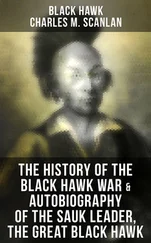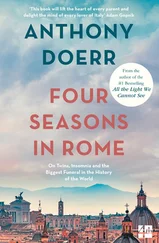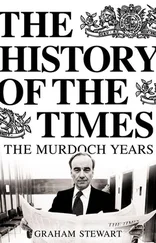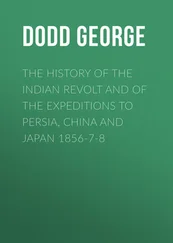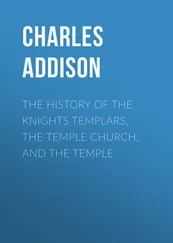Edward Dickinson - Music in the History of the Western Church
Здесь есть возможность читать онлайн «Edward Dickinson - Music in the History of the Western Church» — ознакомительный отрывок электронной книги совершенно бесплатно, а после прочтения отрывка купить полную версию. В некоторых случаях можно слушать аудио, скачать через торрент в формате fb2 и присутствует краткое содержание. Жанр: foreign_antique, foreign_prose, на английском языке. Описание произведения, (предисловие) а так же отзывы посетителей доступны на портале библиотеки ЛибКат.
- Название:Music in the History of the Western Church
- Автор:
- Жанр:
- Год:неизвестен
- ISBN:нет данных
- Рейтинг книги:4 / 5. Голосов: 1
-
Избранное:Добавить в избранное
- Отзывы:
-
Ваша оценка:
- 80
- 1
- 2
- 3
- 4
- 5
Music in the History of the Western Church: краткое содержание, описание и аннотация
Предлагаем к чтению аннотацию, описание, краткое содержание или предисловие (зависит от того, что написал сам автор книги «Music in the History of the Western Church»). Если вы не нашли необходимую информацию о книге — напишите в комментариях, мы постараемся отыскать её.
Music in the History of the Western Church — читать онлайн ознакомительный отрывок
Ниже представлен текст книги, разбитый по страницам. Система сохранения места последней прочитанной страницы, позволяет с удобством читать онлайн бесплатно книгу «Music in the History of the Western Church», без необходимости каждый раз заново искать на чём Вы остановились. Поставьте закладку, и сможете в любой момент перейти на страницу, на которой закончили чтение.
Интервал:
Закладка:
All patriotic songs and religious poems properly called hymns belong in the second division of lyrics; and in the Hebrew psalms devotional feeling touched here and there with a patriot’s hopes and fears, has once for all projected itself in forms of speech which seem to exhaust the capabilities of sublimity in language. These psalms were set to music, and presuppose music in their thought and their technical structure. A text most appropriate for musical rendering must be free from all subtleties of meaning and over-refinements of phraseology; it must be forcible in movement, its metaphors those that touch upon general observation, its ideas those that appeal to the common consciousness and sympathy. These qualities the psalms possess in the highest degree, and in addition they have a sublimity of thought, a magnificence of imagery, a majesty and strength of movement, that evoke the loftiest energies of a musical genius that ventures to ally itself with them. In every nation of Christendom they have been made the foundation of the musical service of the Church; and although many of the greatest masters of the harmonic art have lavished upon them the richest treasures of their invention, they have but skimmed the surface of their unfathomable suggestion.
Of the manner in which the psalms were rendered in the ancient Hebrew worship we know little. The present methods of singing in the synagogues give us little help, for there is no record by which they can be traced back beyond the definite establishment of the synagogue worship. It is inferred from the structure of the Hebrew poetry, as well as unbroken usage from the beginning of the Christian era, that the psalms were chanted antiphonally or responsively. That form of verse known as parallelism – the repetition of a thought in different words, or the juxtaposition of two contrasted thoughts forming an antithesis – pervades a large amount of the Hebrew poetry, and may be called its technical principle. It is, we might say, a rhythm of thought, an assonance of feeling. This parallelism is more frequently double, sometimes triple. We find this peculiar structure as far back as the address of Lamech to his wives in Gen. iv. 23, 24, in Moses’ song after the passage of the Red Sea, in the triumphal ode of Deborah and Barak, in the greeting of the Israelitish women to Saul and David returning from the slaughter of the Philistines, in the Book of Job, in a large proportion of the rhythmical imaginative utterances of the psalmists and prophets. The Oriental Christians sang the psalms responsively; this method was passed on to Milan in the fourth century, to Rome very soon afterward, and has been perpetuated in the liturgical churches of modern Christendom. Whether, in the ancient temple service, this twofold utterance was divided between separate portions of the choir, or between a precentor and the whole singing body, there are no grounds for stating, – both methods have been employed in modern times. It is not even certain that the psalms were sung in alternate half-verses, for in the Jewish Church at the present day the more frequent usage is to divide at the end of a verse. It is evident that the singing was not congregational, and that the share of the people, where they participated at all, was confined to short responses, as in the Christian Church in the time next succeeding the apostolic age. The female voice, although much prized in secular music, according to the Talmud was not permitted in the temple service. There is nothing in the Old Testament that contradicts this except, as some suppose, the reference to the three daughters of Heman in 1. Chron. xxv. 5, where we read: “And God gave to Heman fourteen sons and three daughters;” and in verse 6: “All these were under the hands of their father for song in the house of the Lord.” It is probable, however, that the mention of the daughters is incidental, not intended as an assertion that they were actual members of the temple chorus, for we cannot conceive why an exception should have been made in their behalf. Certainly the whole implication from the descriptions of the temple service and the enumeration of the singers and players is to the effect that only the male voice was utilized in the liturgical worship. There are many allusions to “women singers” in the Scriptures, but they plainly apply only to domestic song, or to processions and celebrations outside the sacred enclosure. It is certainly noteworthy that the exclusion of the female voice, which has obtained in the Catholic Church throughout the Middle Age, in the Eastern Church, in the German Protestant Church, and in the cathedral service of the Anglican Church, was also enforced in the temple worship of Israel. The conviction has widely prevailed among the stricter custodians of religious ceremony in all ages that there is something sensuous and passionate (I use these words in their simpler original meaning) in the female voice – something at variance with the austerity of ideal which should prevail in the music of worship. Perhaps, also, the association of men and women in the sympathy of so emotional an office as that of song is felt to be prejudicial to the complete absorption of the mind which the sacred function demands. Both these reasons have undoubtedly combined in so many historic epochs to keep all the offices of ministry in the house of God in the hands of the male sex. On the other hand, in the more sensuous cults of paganism no such prohibition has existed.
There is difference of opinion in regard to the style of melody employed in the delivery of the psalms in the worship of the temple at Jerusalem. Was it a mere intoned declamation, essentially a monotone with very slight changes of pitch, like the “ecclesiastical accent” of the Catholic Church? Or was it a freer, more melodious rendering, as in the more ornate members of the Catholic Plain Song? The modern Jews incline to the latter opinion, that the song was true melody, obeying, indeed, the universal principle of chant as a species of vocalism subordinated in rhythm to the text, yet with abundant movement and possessing a distinctly tuneful character. It has been supposed that certain inscriptions at the head of some of the psalms are the titles of well-known tunes, perhaps secular folk-songs, to which the psalms were sung. We find, e. g. , at the head of Ps. xxii. the inscription, “After the song beginning, Hind of the Dawn.” Ps. lvi. has, “After the song, The silent Dove in far-off Lands.” Others have, “After lilies” (Ps. xlv. and lxix.), and “Destroy not” (Ps. lvii. – lix.). We cannot on a priori principles reject the supposition that many psalms were sung to secular melodies, for we shall find, as we trace the history of music in the Christian era, that musicians have over and over again borrowed profane airs for the hymns of the Church. In fact, there is hardly a branch of the Christian Church that has not at some time done so, and even the rigid Jews in modern times have employed the same means to increase their store of religious melodies.
That the psalms were sung with the help of instruments seems indicated by superscriptions, such as “With stringed instruments,” and “To the flutes,” although objections have been raised to these translations. No such indications are needed, however, to prove the point, for the descriptions of worship contained in the Old Testament seem explicit. The instruments were used to accompany the voices, and also for preludes and interludes. The word “Selah,” so often occurring at the end of a psalm verse, is understood by many authorities to signify an instrumental interlude or flourish, while the singers were for a moment silent. One writer says that at this point the people bowed in prayer. 28 28 Synagogue Music , by F. L. Cohen, in Papers read at the Anglo-Jewish Historical Exhibition , London, 1847.
Интервал:
Закладка:
Похожие книги на «Music in the History of the Western Church»
Представляем Вашему вниманию похожие книги на «Music in the History of the Western Church» списком для выбора. Мы отобрали схожую по названию и смыслу литературу в надежде предоставить читателям больше вариантов отыскать новые, интересные, ещё непрочитанные произведения.
Обсуждение, отзывы о книге «Music in the History of the Western Church» и просто собственные мнения читателей. Оставьте ваши комментарии, напишите, что Вы думаете о произведении, его смысле или главных героях. Укажите что конкретно понравилось, а что нет, и почему Вы так считаете.


